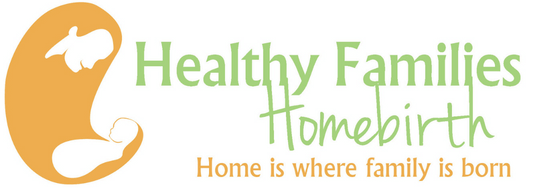

PHONE
303-718-1554
cheryl.furer@msn.com
OPENING HOURS
By Appointment Only
Menu

As an embryo we have a specific rate of growth. Once we become a fetus, our genetics create variability. The paternal (father’s) side of the family can be a good indication of the length of this pregnancy. Other factors include: a male fetus, a previous postdate pregnancy; inaccurate estimated due dates, and rarely, placental sulfatase deficiency or genetic abnormalities. Placental sulfatase deficiency is when the placenta cannot make the one of the enzymes that helps start labor. This is a very rare condition.
Post-date means that the pregnancy has gone beyond the estimated birth date. Post-term means that the fetus has aged past the point of when he or she should have been born.
Colorado regulations require that a biophysical profile (BPP) be done at 42 weeks. The BPP can be an accurate way of telling the health of the fetus and if further action needs to be taken. The BPP is a check of the fetal heart rate and the amount of amniotic fluid available. When going to the BPP be sure that you are well hydrated. If the BPP reveals that there is some need for concern (a score of 5 is the lowest score considered normal), please get a SECOND opinion as soon as possible! The reason being that ultrasound technicians may vary in their ability to get an accurate reading. A low BPP score may be a good reason for a medical induction. Talk to your provider as soon as possible.
A post-term diagnosis can only be made after the baby is born. Then various newborn features can be looked at to see how old the newborn is. When there is an accurate due date, then it is figured that only 2% of pregnancies truly go post-date. Ways to calculate an accurate date are: knowing the date of ovulation and last menstrual period or an early (between 7-10 weeks) ultrasound. Either of these two methods can predict the estimated due date much closer, + or –2-3 days.
Risks of a post-term fetus to the mother:
Risks of a post-term fetus to the fetus:
Besides physical reasons for labor not beginning or stalling, the mental and emotional realm can also play a factor. Talk to your care provider, doula, partner, clergy, family, or friend about any concerns you have about labor or becoming a parent. There are also abundant networks of other health professionals that can be accessed. Please contact me or your care provider to provide you with references that suit your needs.
Before considering a non-emergency reason for induction, consider the following. Do not start an induction if you are tired! It is impossible to tell how long or how much energy your labor will take. Be sure you are very well rested before trying anything to stimulate labor. Going into labor tired can make it harder when you really need the additional energy. Also, keep in mind that oxytocin levels are at their highest around 2 a.m. If you are having contractions at night, then sleeping during the day is important! Sleep first- induce later!
Methods for an out-of-hospital induction include:
Making Love With Your Partner or Stimulating Yourself: orgasms release oxytocin into the blood, which can then be accessed by the uterus to stimulate contractions. If your partner is male, then sperm is a mild prostaglandin. This will help soften the cervix and stimulate dilation and effacement. This can be done any time, with your midwife’s blessing ♥
Visualization techniques; Hypnosis; Exercises: These can also be done on your own or I can provide you with a list of resources.
Homeopathy can strengthen the inner workings of your body. If your body is ready to give birth to your baby, then homeopathy can increase the likeliness of this happening and make the process smoother. Contact me about using homeopathy, or I can provide you with local resources of respected homeopaths in the area.
Sweeping of the membranes: useful if there is a history of post-term pregnancies.
Benefits:
Risks:
Herbs:
Supplements:
Other modalities:
Chiropractic care- making sure that your bones and pelvis are in good aliment can make labor easier and faster.
Acupuncture- there are specific pressure points that can help stimulate contractions. Be sure to have the therapist show you some spots that you can do yourself also
Massage- stimulating to the circulatory system and relaxing
Cranio-sacral therapy can create space in the pelvis and spine.
Please discuss with your care provider on any methods you choose to do.
Keep in mind that no one has been pregnant forever. Enjoy the last few days of your pregnancy!
References:
Tompkins, A. (2011, September 16). Post-Dates Mamas. Lecture presented at Colorado Midwives Association Fall Conference in Highlands Ranch Library, Highlands Ranch.
Tharpe, N., & Farley, C. L. (2009). Clinical practice guidelines for midwifery & women’s health. Sudbury, MA: Jones and Bartlett.
Varney, H., Kriebs, J. M., & Gegor, C. L. (2004). Varney’s midwifery. Sudbury, MA: Jones and Bartlett Pub
***This is general information. Please speak to your health care provider about your unique health needs.

“I believe in continuity of care, which means that as your midwife, I’m here to support you throughout your pregnancy, birth, up until your baby is a toddler (really!) and beyond…”


Proud Practitioner with BeHerVillage. Create a Registry Here.
Copyright © 2022 Healthy Families Homebirth – Home is Where Family is Born | All Rights Reserved | Website by Cheryl Furer & Precy Onasa